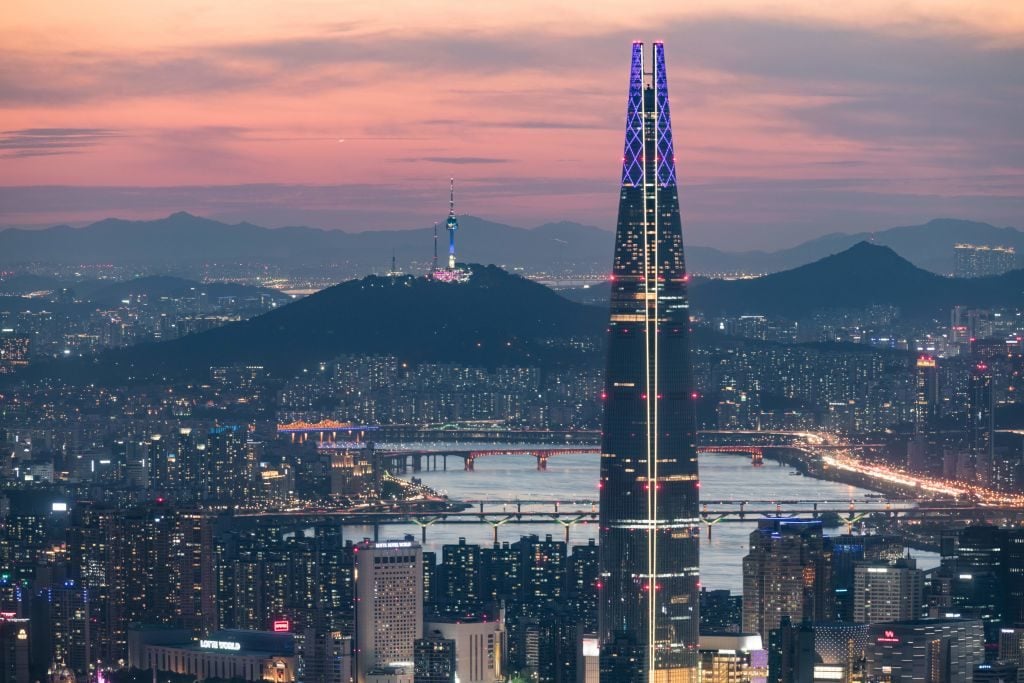Market
3 Trends Art Dealers and Collectors Need to Understand to Break Into the Asian Art Market
At the Talking Galleries conference in Seoul, experts identified a number of changes in the Asian market.

At the Talking Galleries conference in Seoul, experts identified a number of changes in the Asian market.

Henri Neuendorf

For the third consecutive year, the art market think tank Talking Galleries hosted a program of discussions in Seoul as part of the 17th Korea International Art Fair this past October 5 and 6. Focusing on collecting, media, art market reports, architecture, design, and other topics, the conference featured four panel discussions with a range of speakers from Asia and around the world, each addressing the challenges facing the global art market, with a particular focus on Asia.
Here are a few key trends that emerged from the two lively days of discussions.
Even though China is the largest and most powerful player in the Asian art market, the country’s market is a relative newcomer in the region. Other nations, particularly Japan and Korea, boast much more mature and developed markets. Many collectors from these countries are experienced second-or third-generation buyers who were exposed to art collecting by parents or grandparents. In contrast, the majority of Chinese collectors are first-generation buyers.
Like many emerging markets, tastes in China are still developing. An equivalent post-war art movement such as Japan’s Gutai or Korea’s Dansaekhwa didn’t have the opportunity to unfold and establish itself under the cultural revolution and Mao’s dictatorship, where artists were largely restricted to depicting state-sanctioned propaganda.
Despite the financial clout of the booming Chinese art market, the Asian continent has a much broader range of wealth and diversity that can’t be ignored. Each of these local markets has a multitude of unique and defining characteristics. Take, for example, the emergence of Japan’s mega-collector Yusaku Maezawa, who burst onto the scene last year when he bought Jean-Michel Basquiat’s Untitled skull painting from 1982 at Christie’s for $110 million.
When Asian collectors first entered the fray they were primarily interested in repatriating their own cultural heritage, buying ancient Asian art and antiquities from Western auction houses and galleries. However, in the past five years, there have been significant changes in buyer behavior, with Asian collectors increasingly developing an appetite for Western art, particularly blue-chip American and European artists from the 20th century onward.
According to Christie’s, about 60 percent of the money spent by Asian buyers in the first half of 2018 was spent on works by non-Asian artists, a figure up slightly from 58 percent in the same period last year.
Meanwhile, at Sotheby’s, spending from Asian buyers in all categories has increased 50 percent over the past five years. In 2017, Asian clients accounted for 35 percent of Sotheby’s global sales by value, spending a total of roughly $1.6 billion. That same year, 38 percent of all Asian spending at Sotheby’s went toward Western art, up from 29 percent from 2016.
So what’s behind this shift in taste? Major Western galleries, auction houses, and art fairs have expanded throughout the region to introduce Asian audiences to their art. Additionally, for many Asian collectors, especially those from China, the more mature Western market is easier to navigate. There are fewer fakes to worry about and there’s often greater social status associated with buying works in New York or London.
In the competitive emerging Asian markets, such as in China, collectors are looking for ways to show off their holdings by opening their collections to the public. For example, the Indonesian-Chinese collector and entrepreneur Budi Tek launched the Yuz Museum in Shanghai in 2007 and, five years later, the taxi driver turned investment billionaire Liu Yiqian and his wife Wang Wei opened the Long Museum in Shanghai in 2012.
Meanwhile, in Korea, corporations have a long tradition of supporting the arts. Cosmetics entrepreneur Suh Sung-whan opened the Amorepacific museum in 1979, which relocated to a stunning new David Chipperfield-designed space in Seoul last year. In the past 20 years, a number of new corporate museums have disrupted the institutional landscape, including Samsung, which opened the Leeum Museum of Art in Seoul in 2004, and the Lotte conglomerate which opened its own collection to the public adjacent to its headquarters in the Lotte World Tower in Seoul, the fifth-tallest building in the world.
The next Talking Galleries event will be held in Barcelona from January 21 to 22, 2019.